Rice is a main staple in Thai food. It’s hard to think of Thai food without rice in it. Learn about the different types of rice in Thai cooking (and how to use them).

Rice in Thai cooking is like water to fish and air to humans. (Almost!) It's that valuable in Thai cuisine!
Learn how to cook Thai jasmine rice in 4 different ways here. Also, learn how to cook Thai sticky rice in a traditional way with a bamboo basket, make sticky rice on the stovetop, or cook sticky rice in an instant pot.
It's eaten at almost every meal, 3-4 times daily, breakfast, lunch, dinner, and snack times.
So, let's learn about the different types of Thai rice used in many Thai recipes.
Learn more about Thai pantry essentials with this ultimate guide. For more useful information on Thai cooking, read about the 13 Essential Sauces for Thai Cooking, different types of Thai rice, Thai herbs, what is tamarind, and what is palm sugar.
Jump to:
- The 6 major types of rice in Thai cuisine
- 1. Thai Jasmine Rice, Thai Hom Mali Rice (ข้าวหอมมะลิ)
- Jasmine Rice vs Jasmine Flowers
- Recipes using Thai jasmine rice
- 2. White sticky rice, Thai Glutinous Rice (ข้าวเหนียวขาว)
- Recipes using Thai sticky rice
- 3. Black sticky rice, Khao Neow (ข้าวเหนียวดำ)
- Recipes using black rice
- 4. Thai brown jasmine rice, Khao Glong (ข้าวกล้อง)
- Recipes using Thai brown Jasmine rice
- 5. Red rice, ข้าวเหนียวแดง
- How to use Thai red rice
- 6. White rice, Khao Kao (ข้าวขาว)
- Recipes using white rice
- Frequently asked questions
- More Thai rice recipes you'll love
- More Rice Recipes You'll Love
There are 6 major types of rice used in Thai cooking. There are many more rice varieties, hundreds and perhaps thousands more, but these rice are used most often in Thai cuisine.
The 6 major types of rice in Thai cuisine
The following rice is all unique with flavors, textures, and aromas. Each rice has its purpose in different recipes. Read on. Let's get into some Thai rice!
- Jasmine Rice. Also known as Thai fragrant rice, Jasmine rice is a long-grain rice popular for its delicate floral aroma and soft, slightly sticky texture.
- Sticky rice. Also known as glutinous rice or sweet rice, sticky rice is short-grained rice that is sticky and chewy once cooked. It is often used in desserts and as a side dish.
- Black Rice. Also known as forbidden rice, black rice is a nutritious whole grain rich in antioxidants. It has a chewy texture and a nutty flavor.
- Brown Rice. Brown rice is a whole grain rice high in fiber and nutrients. It has a chewy texture and a nutty flavor.
- Red Rice. Red rice is whole-grain rice that is similar in texture to brown rice but has a slightly nuttier flavor. It is also high in fiber and nutrients.
- White Rice. Although not technically a type of rice, wild rice is a nutritious grain often used in Thai cuisine. It has a chewy texture and a nutty, earthy flavor.
There are 2-3 types of Thai rice used almost exclusively, but sometimes you'll see the other types used. Let's learn more.
1. Thai Jasmine Rice, Thai Hom Mali Rice (ข้าวหอมมะลิ)
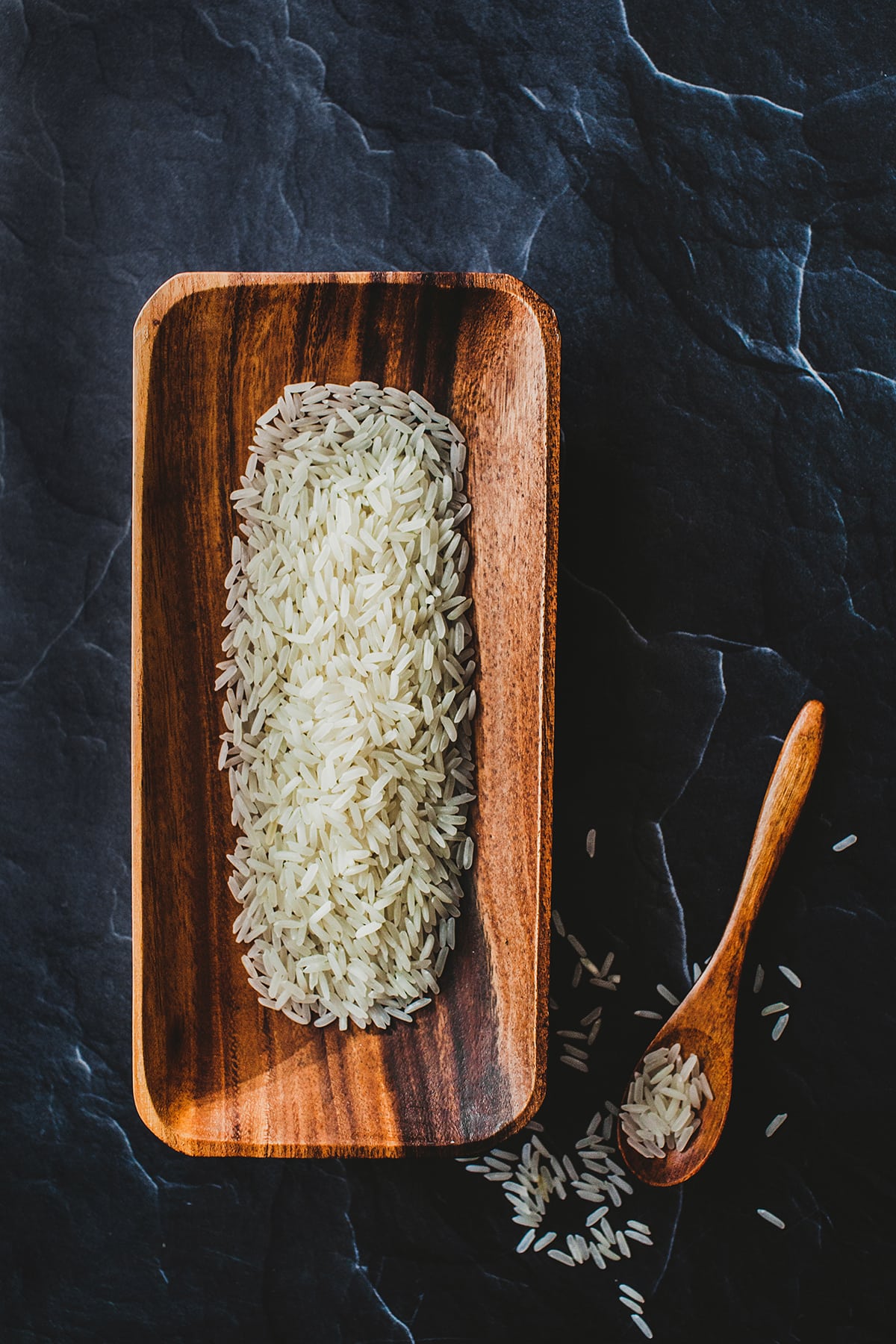
Jasmine rice is the most popular and well-known rice served alongside many Thai dishes. When cooked, Thai Jasmine rice has a fluffy but semi-sticky feel with a milky white appearance.
It offers a subtle yet inviting earthy sweetness that reminds me of home. Thai jasmine rice is the best rice to use in dishes like fried rice recipes, as a side dish with the other main dish, or in other Thai recipes.
It's a popular choice for making nice dinners because Jasmine rice is beautiful with soft, long, fluffy grains and a pleasant aroma.
Jasmine Rice vs Jasmine Flowers
There's a popular false belief about the smell of Jasmine rice smelling like Jasmine flowers. It doesn’t. The name "Jasmine" rice comes from the similar look of the milky white rice grains to the white Jasmine flowers.
That's it.
In Thai, Jasmine rice is called Khao Dawk Mali. Dawk Mali means Jasmine flowers, while Khao means rice, which is how Jasmine rice gets its name. Jasmine rice is also called Khao Hom Mali, and Hom means fragrant or something that smells good.
Recipes using Thai jasmine rice
This is an endless list, as rice is used in Thai meals. It's used so extensively in countless Thai recipes. I'll list a few classic Thai dishes to give you an idea of how rice is used in Thai cuisine.
- Thai shrimp fried rice
- Yellow curry fried rice
- Khao Pad, or fried rice recipes. These can be fried rice with shrimp, chicken, crab meat, pork, or vegetarian dishes.
- Thai coconut rice.
- Khao Tom is a rice soup using cooked rice.
2. White sticky rice, Thai Glutinous Rice (ข้าวเหนียวขาว)

Thai sticky rice, also known as glutinous rice, is a type of rice that is commonly used in Thai cuisine. It is called "sticky" because of its sticky and chewy texture due to its high starch content.
The grains of Thai sticky rice are long and opaque, slightly thicker than Thai Jasmine rice.
Sticky rice is cooked by soaking it in water for several hours and then steaming it in a special basket or pot.
Thai sticky rice is often served as a side dish with various curries, stir-fries, and grilled meats or made into sweet desserts such as mango sticky rice.
It is a staple food in many parts of Southeast Asia and is beloved for its unique texture and flavor.
Recipes using Thai sticky rice
- Mango sticky rice
- Khao Jee sticky rice
- Purple sticky rice
- Sticky rice as a side dish, using a traditional bamboo basket
- Khao Khua, toasted rice powder
- Baked Nian Gao by Emily Ho, shared on The Storied Recipe.
3. Black sticky rice, Khao Neow (ข้าวเหนียวดำ)

Also called black glutinous rice. The purple sticky rice is very similar to the white sticky rice. However, it is more dense and starchy in texture.
You’d prepare the purple sticky rice exactly the same way, but here’s an important step many people miss.
Black sticky rice must be combined with white sticky rice to make purple sticky in a ratio of 3-1 first before soaking and steaming the rice.
The reason is because of the heavier and starchier texture of the rice, as mentioned above. Check out the recipe on how to make purple sticky rice here.
Recipes using black rice
- Purple sticky rice
- Forbidden Black rice
- Black rice pudding
- Black rice cakes
4. Thai brown jasmine rice, Khao Glong (ข้าวกล้อง)
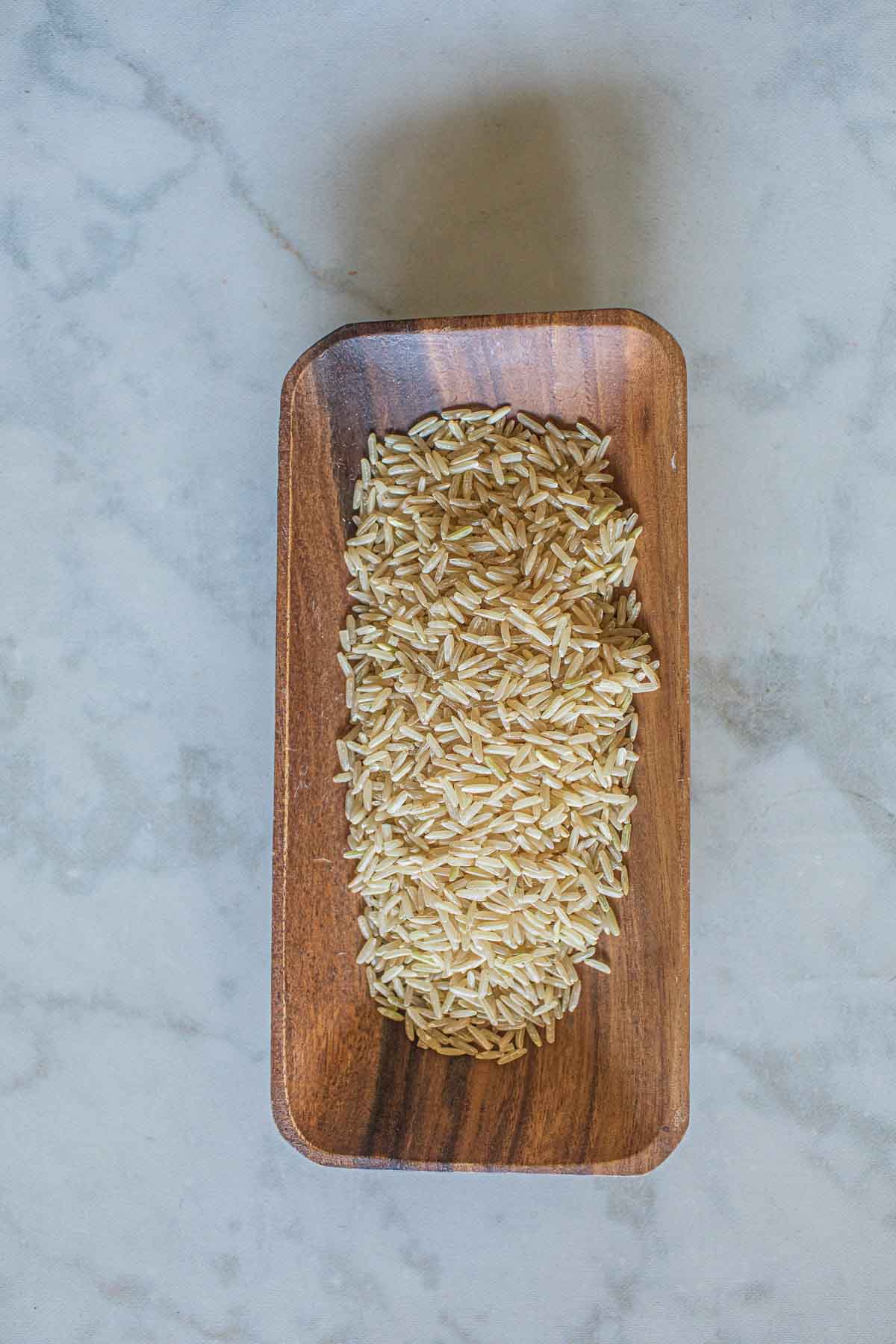
This whole-grain brown rice can be brown Jasmine rice or regular brown rice. Though much more nutritious and full of health benefits, brown rice is less popular than Jasmine white rice.
Brown jasmine rice is also a little bit more expensive, deterring people further away from choosing it.
Recipes using Thai brown Jasmine rice
- Brown rice is served on the side instead of white rice.
- Any recipe that uses white rice, if you prefer brown jasmine rice, that's what you'll use it for.
- Brown rice is excellent in fried rice or rice soups. They are high in fiber and full of nutritious vitamins and nutrients.
5. Red rice, ข้าวเหนียวแดง
There are two types of red rice from Thailand. One is the red cargo rice, and the other is the red sticky rice.
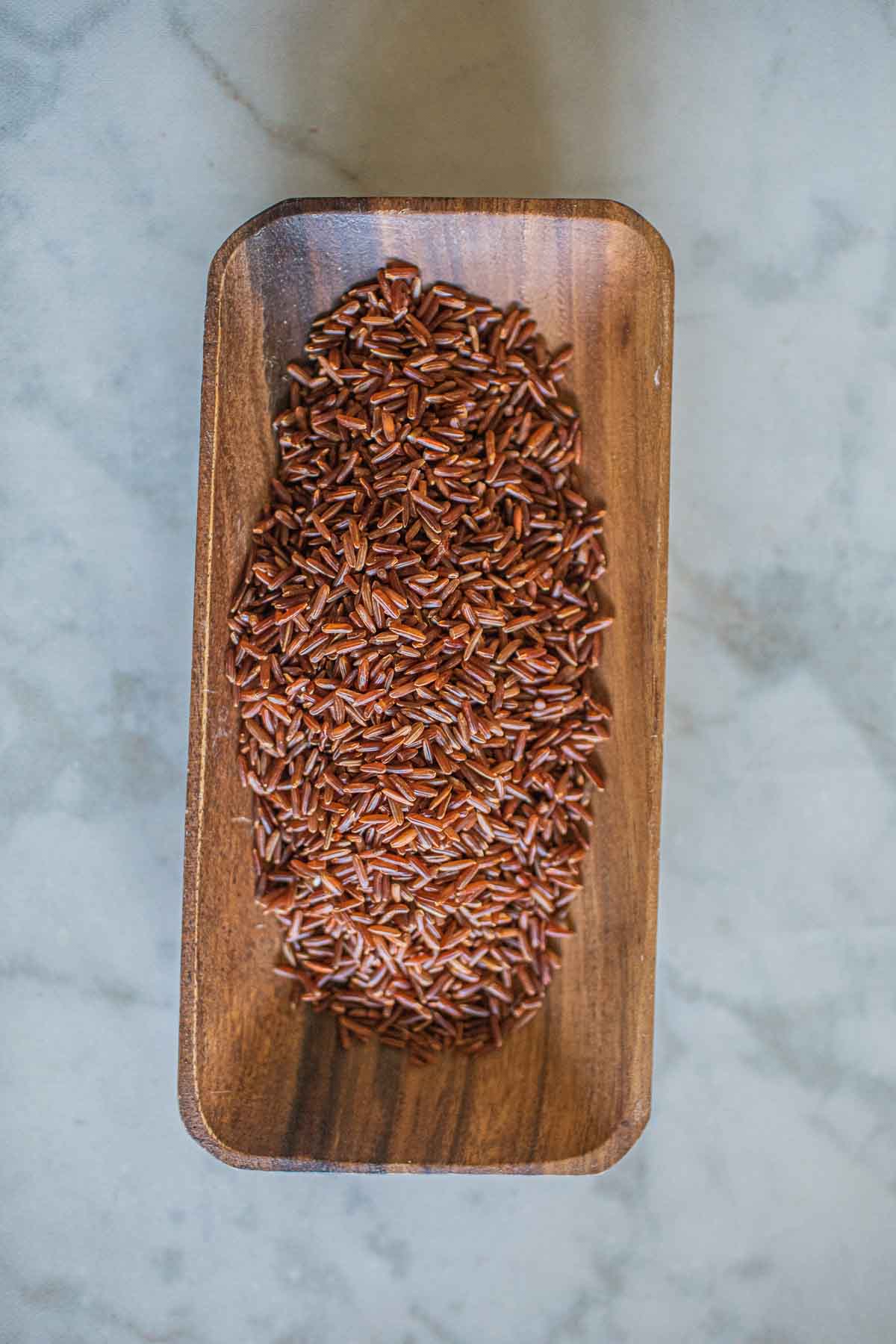
The red cargo rice (above) resembles brown jasmine rice and basmati rice. Red rice has thin, long grains and behaves and is cooked the same way as brown rice.
Red rice is also a healthy kind of rice that is full of antioxidants and high in fiber. The cooked rice has a nutty flavor from the bran, husk, and germ that have not been processed, making the rice taste more earthy.
Thai Red sticky rice is another glutinous rice with a deep red tone with the bran, husk, and germs intact, giving it a colorful red color. It is also long-grain rice, unlike Japan's short red glutinous rice.
Red sticky rice is used like Thai sticky rice in Thai desserts, as a side dish, or in different recipes. Red and brown rice are rich in nutrients like vitamins E, B, and K, calcium, magnesium, and much more.
How to use Thai red rice
Red rice can be used the same way as brown jasmine rice. If you use brown rice instead of white rice in your recipes, try the red rice next time. The red color is not only beautiful, but it's full of healthy nutrients for your health!
Rinse the rice at least three times in water before cooking to remove the starchiness and impurities from the grains.
6. White rice, Khao Kao (ข้าวขาว)
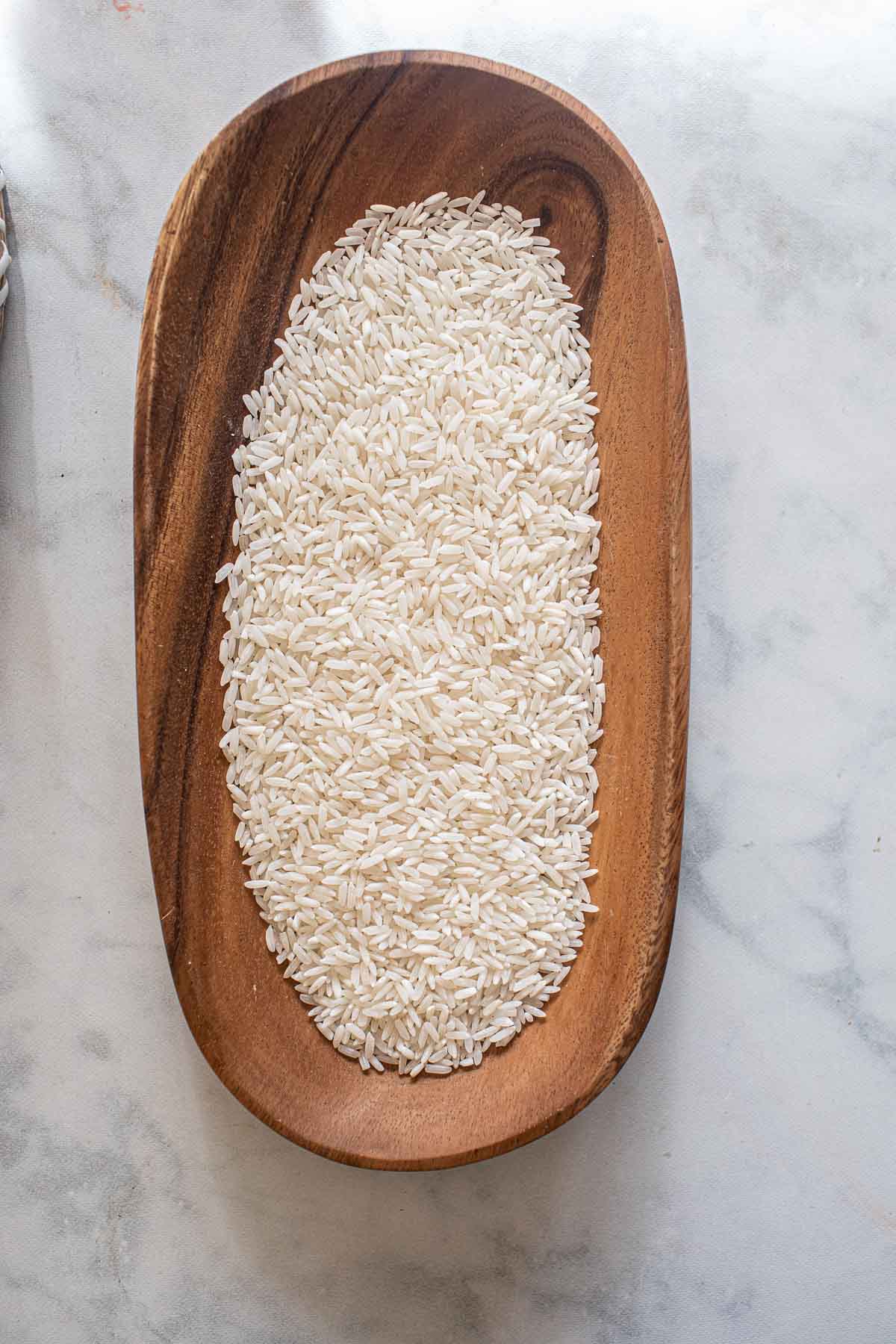
These are regular white rice. They are not Jasmine or sticky rice, just plain long-grain white rice that looks like Jasmine rice but does not have the fragrance, taste, or aroma of Jasmine rice.
The rice is quicker and often less expensive, usually as a second rice crop after producing Jasmine rice. The second rice crop is the rice produced after the prime growing season.
Recipes using white rice
- Rice is used in restaurants, Asian and American alike.
- Fried rice and rice served at most Chinese restaurants use long-grain white rice. Chinese fried rice recipes typically use this long-grain white rice.
There you have it for Thai Rice. There are so many different types of rice out there. Last I googled, there are over 40,000 different types of registered rice!
I'll use only 2 or 3 types of rice on my blog for now. Happy rice cooking!
Frequently asked questions
Thailand is known for its world-famous Thai Jasmine rice and Thai sticky rice. Both are extremely popular, well-used, and loved in many recipes in and outside Thailand and other Asian cultures.
Thai Jasmine rice is hands down the most popular type of rice eaten by Thai people, followed by Thai sticky rice.
Jasmine rice is the most well-known Thai rice in and outside Thailand. The rice is popular for its comforting, aromatic, and delicious flavor and texture.
More Thai rice recipes you'll love
- Khao Pad Goong, shrimp fried rice
- Green curry fried rice
- Vegetarian fried rice is an easy fried rice recipe with no meat.
- Thai chicken basil fried rice
- Tom Yum fried rice
- Chicken fried rice
- Pineapple fried rice
** Thank you so much for visiting my blog! This is truly a passion for me. If you have enjoyed these recipes and blog posts and appreciate the hard work I put into them, I would love it if you would share them with your friends!
Your recommendation is the highest review I could hope for, and I’d appreciate it! **


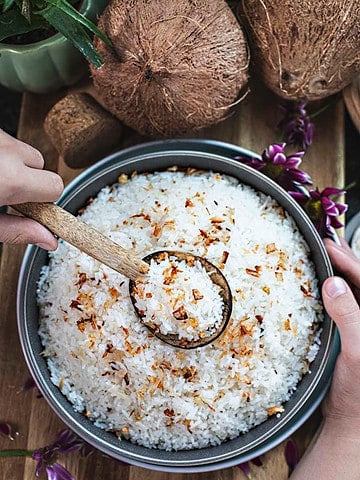
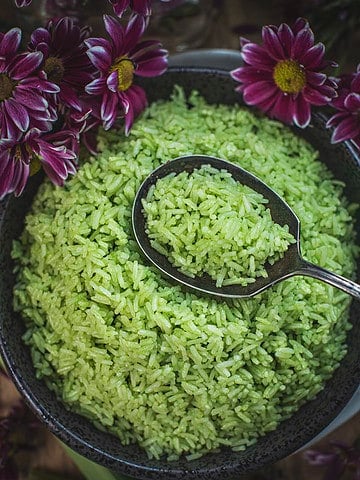
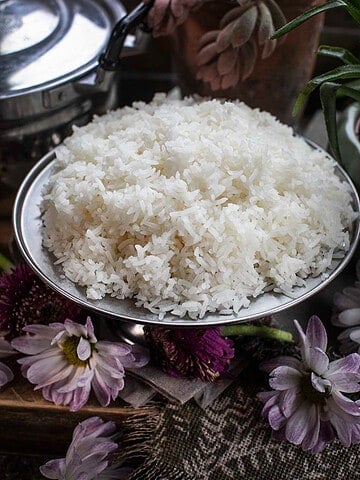


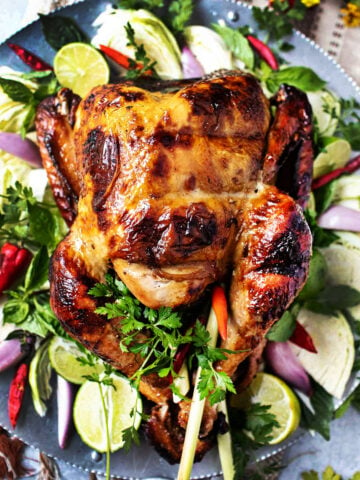
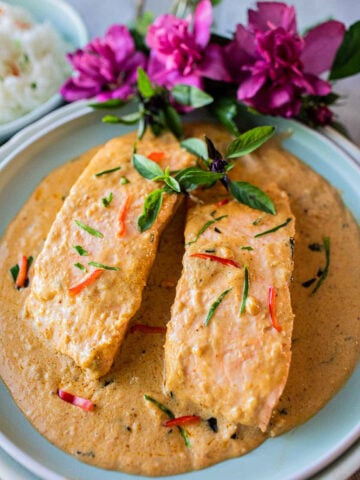
C says
Oooooo....now I want to try red rice too! Thanks for comparing these popular kinds of rice used in Thai cooking. I always learn so much from your blog. And now I'm off to soak some rice. 🙂
Chae says
This is a great reference! I have only bought jasmine rice and black rice. Thanks for expanding our understanding of rice.